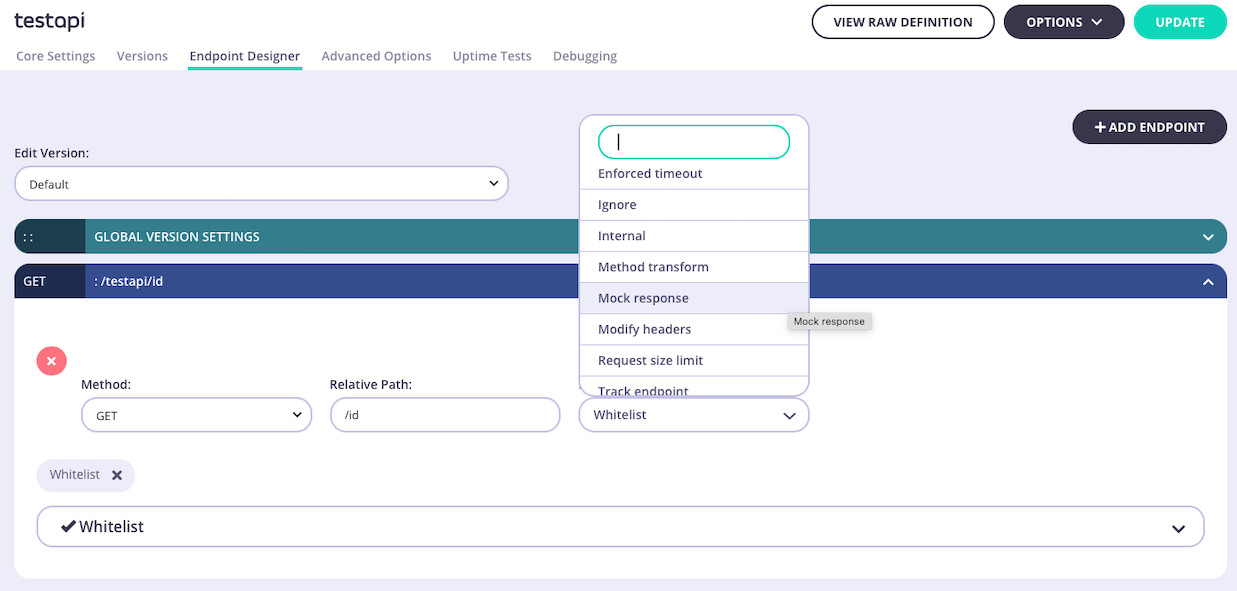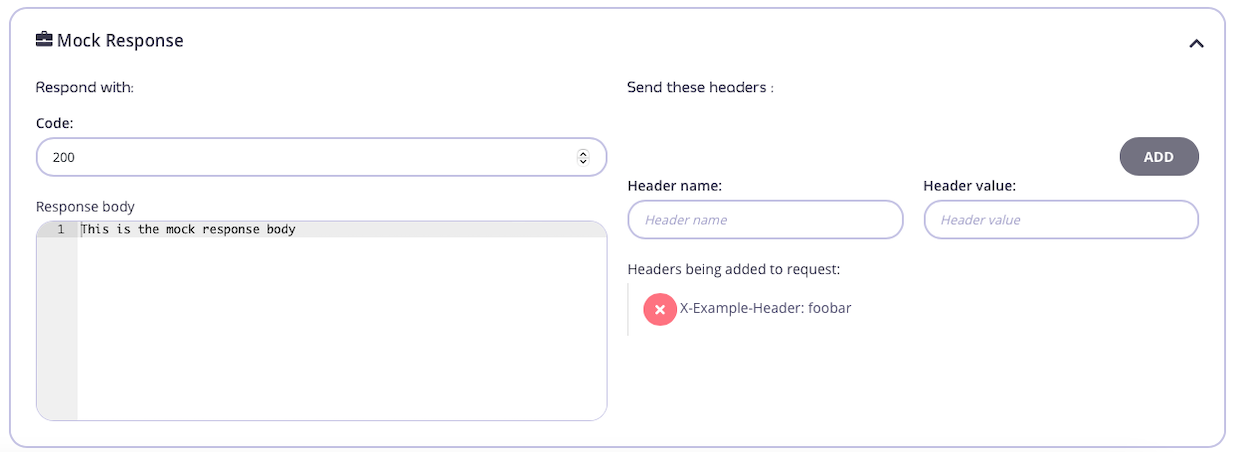Using the Mock Response middleware with Tyk Classic APIs
Last updated: 4 minutes read.
The Mock Response middleware allows you to configure Tyk to return a response for an API endpoint without requiring an upstream service. This can be useful when creating a new API or making a development API available to an external team.
When working with Tyk Classic APIs, this middleware is executed at the start of the request processing chain. Thus an endpoint with the mock response middleware will not be authenticated, will not process other middleware configured for the API (neither API nor endpoint level) and will have no analytics created. It will simply return the configured response for any request made to that endpoint.
The middleware is configured in the Tyk Classic API Definition. You can do this via the Tyk Dashboard API or in the API Designer.
If you’re using the newer Tyk OAS APIs, then check out the Tyk OAS page.
Endpoint parsing
When you define an endpoint in your API Definition (for example GET /anything), Tyk will also match for GET /anything/somepath and any other sub-path based on the GET /anything route.
You will typically configure the mock response middleware to give the mocked response for only specific paths, for example you may not want Tyk to provide the mock response for GET /anything/somepath.
If you add a $ at the end of the listen_path (in our example GET /anything$) then Tyk’s regular expression matching will be exact, and will not match endpoints with characters following the specified endpoint.
Thus, if you enable the middleware for GET /anything$ then GET /anything/somepath will be proxied to the upstream and will not trigger the mock response.
Configuring the middleware in the Tyk Classic API Definition
To enable mock response, you must first add the endpoint to a list - one of allow list, block list or ignore authentication. This will add a new object to the extended_paths section of your API definition - white_list, black_list or ignored. The mock response can then be configured within the method_actions element within the new object.
The white_list, black_list and ignored objects all have the same structure and configuration as follows:
path: the endpoint pathmethod: this should be blankignore_case: if set totruethen the path matching will be case insensitivemethod_actions: the configuration of the mock response
The method_actions object should be configured as follows, with an entry created for each method on the path for which you wish to configure the mock response:
action: this should be set toreplycode: the HTTP status code to be provided with the responseheaders: the headers to inject with the responsebody: the payload to be returned as the body of the response
For example:
|
|
In this example the mock response middleware has been configured for requests to the GET /anything endpoint. The allow list middleware has been enabled for this endpoint and is case sensitive, so calls to GET /Anything will not return the mock response.
A call to GET /anything would return:

HTTP/1.1 200 OK
X-Example-Header: foobar
Date: Wed, 31 Jan 2024 16:21:05 GMT
Content-Length: 30
Content-Type: text/plain; charset=utf-8
This is the mock response body
Configuring the middleware in the API Designer
You can use the API Designer in the Tyk Dashboard to configure the Mock Response middleware for your Tyk Classic API by following these steps.
Step 1: Add an endpoint for the path and configure a list plugin
For the mock response to be enabled, the endpoint must also be in a list. We recommend adding the path to an allow list by selecting the Whitelist plugin.
Step 2: Add the mock response plugin
Now select the Mock response plugin.

Step 3: Configure the middleware
Once you have selected the Mock response middleware for the endpoint, you can configure the HTTP status code, headers and body to be included in the response. Remember to click ADD, to add each header to the response.

Step 4: Save the API
Use the save or create buttons to save the changes and activate the middleware.
Note
For the mock response to be enabled, the endpoint must also be in a list. We recommend adding the path to an allow list. If this isn’t done, then the mock will not be saved when you save your API in the designer.